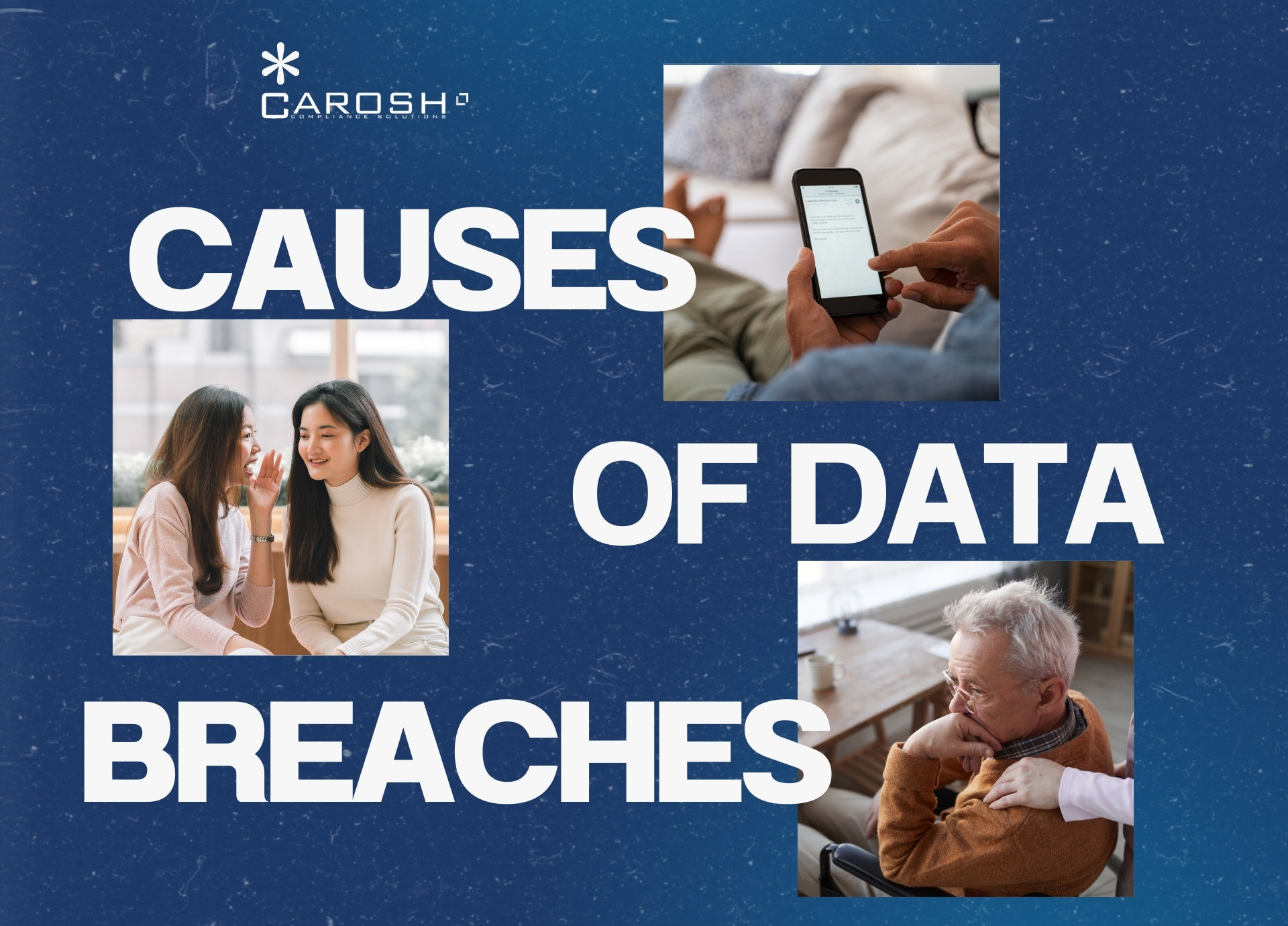
Table of Contents
Understanding Data Breaches in Healthcare
Common Causes of Data Breaches
HIPAA’s Role in Preventing and Responding to Data Breaches
In an era where digital health records are the norm, the security of patient information has never been more critical. Data breaches in healthcare not only compromise the privacy of millions but also expose sensitive information to risks of misuse. Understanding the intricacies of these breaches and the protective measures mandated by laws like HIPAA is essential for healthcare providers and patients alike. This discussion delves into the causes, consequences, and preventive strategies surrounding data breaches in healthcare, offering insights into maintaining the confidentiality and integrity of Protected Health Information (PHI).
Understanding Data Breaches in Healthcare
A data breach in healthcare is a significant event that undermines the confidentiality, integrity, and availability of Protected Health Information (PHI). Such breaches are not only a violation of privacy laws but also a breach of trust between patients and healthcare providers. These incidents can occur under various circumstances, each posing unique challenges to the security of patient data.

Hacking/IT Incidents
These are among the most common and potentially devastating means through which data breaches occur in the healthcare sector. Cybercriminals employ sophisticated techniques such as ransomware, phishing, and malware to infiltrate healthcare systems. Once inside, they can access, extract, and sometimes even hold hostage vast amounts of sensitive data. The complexity and evolving nature of cyber threats make it increasingly difficult for healthcare institutions to safeguard against these attacks.
Loss or Theft of Devices
Portable electronic devices like laptops, tablets, and smartphones can contain vast amounts of PHI. When these devices are lost or stolen, the information stored on them becomes vulnerable to unauthorized access. This type of breach is particularly concerning because it often results from physical security lapses, such as leaving devices unattended in public places or insufficient security measures on the devices themselves.
Unauthorized Access/Disclosures
Breaches can also occur when individuals within a healthcare organization access or disclose PHI without a legitimate reason or authorization. This could be due to curiosity, malice, or negligence and might involve employees, contractors, or even business associates. Such incidents highlight the need for strict access controls, regular training on data privacy policies, and a culture of security within healthcare organizations.
Improper Disposal of PHI
Disposing of PHI requires careful handling to ensure that the information is completely destroyed and rendered unreadable. Paper records must be shredded, and electronic media must be wiped or physically destroyed. Failures in this process can lead to breaches if sensitive information is left intact on discarded devices or documents, making it accessible to unauthorized individuals.
These various avenues through which data breaches can occur underscore the complexity of protecting health information in a digital age. Each type of breach presents its own set of challenges and necessitates specific strategies to prevent occurrence. From enhancing cybersecurity measures and enforcing strict access controls to educating staff about the importance of data security and ensuring proper disposal practices, healthcare organizations must adopt a comprehensive and proactive approach to safeguard patient data against breaches.
Common Causes of Data Breaches
The landscape of healthcare data security is increasingly challenged by the sophistication of cyberattacks, including ransomware and phishing schemes aimed at infiltrating healthcare institutions to unlawfully access Protected Health Information (PHI). These cyber threats exploit vulnerabilities in security systems and rely on the manipulation of human behavior to breach defenses, making them particularly difficult to guard against. Additionally, the threat isn’t confined to external actors; breaches often originate from within an organization. Employees, whether through intentional misconduct or accidental mishandling of information, can expose sensitive patient data by accessing it without a legitimate need or by not following proper data handling procedures.

Navigating Technological Mobility and Data Security Risks in Healthcare
Moreover, the mobility of technology, while enhancing operational efficiency, introduces significant risks. Portable devices such as laptops and external hard drives, which frequently store or access PHI, become potent vectors for data breaches when they are lost or stolen. The absence of these devices not only disrupts healthcare operations but also opens the door to unauthorized access of patient information, a scenario that is alarmingly common given the nature of healthcare work environments.
Vulnerabilities with Third-Party Vendors and Business Associates
The role of third-party vendors and business associates in managing PHI further complicates the security landscape. These entities, which range from billing companies to EHR technology providers, are integral to healthcare operations but also represent potential vulnerabilities. If these third-party partners do not implement stringent data protection measures, they can inadvertently become the weakest link, leading to breaches that compromise vast amounts of sensitive information.
A Comprehensive Approach to Data Security in Healthcare
This multifaceted threat environment underscores the need for a comprehensive approach to data security in healthcare. Protecting patient information requires not only advanced cybersecurity measures to ward off external attacks but also robust internal policies to mitigate insider threats and ensure the secure handling and disposal of PHI. Additionally, healthcare organizations must rigorously assess and manage the risks associated with third-party vendors, ensuring that these partners adhere to the highest standards of data protection to safeguard against breaches originating outside the organization’s direct control.
HIPAA’s Role in Preventing and Responding to Data Breaches
The Health Insurance Portability and Accountability Act (HIPAA) provides a comprehensive framework aimed at safeguarding patient data, delineating specific regulations that healthcare providers, insurers, and their business associates must adhere to in order to protect the integrity and confidentiality of Protected Health Information (PHI). At the heart of HIPAA’s protective measures are several key components that collectively work to preempt data breaches and prescribe a clear course of action in the event that a breach occurs.
Enhancing Patient Data Protection Through HIPAA’s Regulatory Framework
Central to these protective measures is the Privacy Rule, which sets national standards for the privacy of Protected Health Information (PHI), applying to all forms of the information whether electronic, paper, or oral. This rule mandates that covered entities and their business associates handle PHI in a manner that preserves patient confidentiality and privacy rights.
Implementing Robust Safeguards for Electronic PHI
Complementing the Privacy Rule, the Security Rule imposes specific requirements on covered entities to implement a trio of safeguards — physical, administrative, and technical — aimed at securing electronic PHI (ePHI). These safeguards range from encrypting data to controlling access to PHI, ensuring that ePHI remains confidential and is protected against unauthorized access.
Ongoing Risk Management to Secure PHI
Integral to maintaining the security of PHI is the process of risk analysis and management. HIPAA requires that covered entities conduct ongoing assessments to identify potential vulnerabilities and threats to the security of PHI. Based on these assessments, entities must then implement appropriate security measures to mitigate identified risks, thereby reinforcing the safeguarding of patient information.
Proactive Response to Data Breaches
In the event of a data breach involving unsecured PHI, HIPAA’s Breach Notification Rule comes into play. This rule obligates covered entities and their business associates to promptly notify individuals affected by the breach, as well as the Secretary of Health and Human Services and, in certain cases, the media. Notifications must be issued without unreasonable delay, ensuring that they are made no later than 60 days after the discovery of the breach. This timely communication is crucial for mitigating the potential harm to affected individuals and for taking steps to prevent future breaches.
HIPAA’s Comprehensive Approach to Patient Data Security
Through these regulatory measures, HIPAA not only aims to prevent data breaches but also ensures a structured response to incidents, thereby upholding the trust between patients and healthcare providers and reinforcing the overall integrity of the healthcare system. This comprehensive approach to privacy and security seeks to protect patient information across multiple platforms and environments, adapting to the evolving challenges in healthcare data management.

Enforcement and Penalties
The enforcement of the Health Insurance Portability and Accountability Act (HIPAA) regulations falls under the jurisdiction of the Office for Civil Rights (OCR). This federal body holds the authority to impose fines and penalties on healthcare entities that do not adhere to HIPAA’s stringent rules. Non-compliance can stem from various failures, including inadequate responses to data breaches, which can significantly compromise patient information security.
Ensuring Compliance Through Strategic Penalties
The Office for Civil Rights (OCR) adopts a case-by-case approach to assess penalties, taking into account the severity of the breach and the degree of negligence involved. The financial consequences for failing to adhere to HIPAA regulations can be severe, with fines potentially reaching up to $1.5 million per violation category within a single year. This tiered penalty structure is deliberately designed to highlight the importance of compliance and to motivate healthcare entities to uphold the highest standards of patient data protection.
The Critical Role of OCR in Enforcing HIPAA Standards
Through its enforcement mechanism, the OCR plays an essential role in maintaining the principles of patient privacy and data security that form the core of HIPAA. The possibility of incurring significant penalties acts as a potent incentive for healthcare organizations to diligently implement HIPAA’s regulations, ensuring that patient information is consistently protected against unauthorized access and breaches. This rigorous enforcement helps to maintain trust between patients and healthcare providers, reinforcing the integrity of the healthcare system by demonstrating a strong commitment to safeguarding sensitive patient data.
Impact of Data Breaches
Data breaches in the healthcare sector carry repercussions that transcend the immediate financial penalties imposed for non-compliance with regulations such as HIPAA. The ramifications of these breaches deeply affect the very foundation of the patient-provider relationship, leading to diminished trust among patients. This erosion of trust can be particularly detrimental in a field where confidentiality and privacy are paramount. Furthermore, the reputation of the healthcare institution itself can suffer significant damage, a consequence that can have lasting effects on its ability to attract and retain patients, as well as on its professional relationships.
The Far-Reaching Impact of PHI Breaches on Individuals
Beyond the repercussions for healthcare institutions, individuals whose Protected Health Information (PHI) has been compromised by unauthorized disclosures face potentially severe and enduring consequences. The exposure of personal health information can lead to privacy invasions, financial fraud, and even identity theft, deeply affecting the lives of the victims. These outcomes highlight the critical importance of robust PHI protection practices within healthcare organizations.
Cultivating a Compliance-Driven Culture in Healthcare
Given the significant implications of such breaches, it is crucial for healthcare organizations to cultivate a culture that places a high priority on compliance and continuous improvement in PHI protection. This involves going beyond merely meeting the minimum standards prescribed by laws and regulations. It requires an active commitment to implementing practices that enhance the security and confidentiality of patient information. By adopting a proactive approach to data protection, healthcare entities can mitigate the risks associated with data breaches. Moreover, they can rebuild and maintain the trust of their patients, safeguard their reputations, and ensure the well-being of the individuals they serve, thereby upholding the integrity of their operations and the healthcare system at large.
Data breaches in healthcare are a significant threat to patient privacy, with the potential to cause widespread harm. As digital health records become increasingly common, the importance of robust security measures and strict adherence to regulations like HIPAA cannot be overstated. Healthcare providers must remain vigilant, continuously updating and improving their security practices to protect patient information effectively. For patients, staying informed about how your data is protected and understanding your rights in the event of a breach are crucial steps in safeguarding your personal information.
Q&A
Q: What is a data breach in healthcare?
A: A data breach in healthcare occurs when unauthorized access to PHI compromises the security or privacy of patient information. This can happen through cyberattacks, insider threats, lost devices, or breaches by third-party vendors.
Q: How does HIPAA help in preventing data breaches?
A: HIPAA mandates healthcare entities to implement physical, administrative, and technical safeguards to protect PHI. It includes conducting regular risk assessments, ensuring the security of electronic PHI, and establishing a breach notification protocol.
Q: What are the common causes of data breaches in healthcare?
A: Common causes include cyberattacks like phishing and ransomware, insider threats, theft or loss of devices containing PHI, and breaches through third-party vendors.
Q: What should a healthcare provider do if a data breach occurs?
A: Following HIPAA’s Breach Notification Rule, the provider must notify affected individuals, the HHS, and sometimes the media, depending on the breach’s scale, without unreasonable delay and within 60 days of discovery.
Q: What are the consequences of data breaches in healthcare?
A: Beyond the legal penalties, data breaches can lead to a loss of patient trust, damage to the healthcare provider’s reputation, and potential harm to the individuals whose information was compromised.




